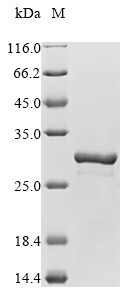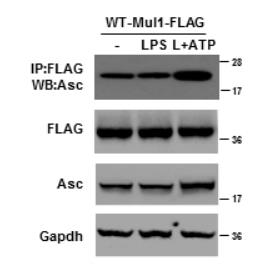A cDNA sequence encoding full-length mouse apoptosis-associated speck-like protein containing a CARD (Pycard) was inserted a 10xHis--tag at the N-terminus and a Myc-tag at the C-terminus and then expressed in E.coli. The resulting protein consists of 1-193aa of mouse Pycard and has a calculated molecular weight of 28.9 kDa. Its purity is greater than 85% measured by SDS-PAGE. This recombinant Pycard protein may find uses in the specific antibody generation or the studies of Pycard-involving cancers.
Pycard, also known as ASC, is an adaptor protein of the inflammasome complex which forms aggregates (ASC specks) leading to cell death by pyroptosis. Rendong Fang etc. showed that Pycard and NLRP3 facilitate airway mucosal innate immunity via an inflammasome-independent mechanism involving the STAT6-SPDEF pathway. Pycard has been reported to be associated with Rheumatoid arthritis in humans.







